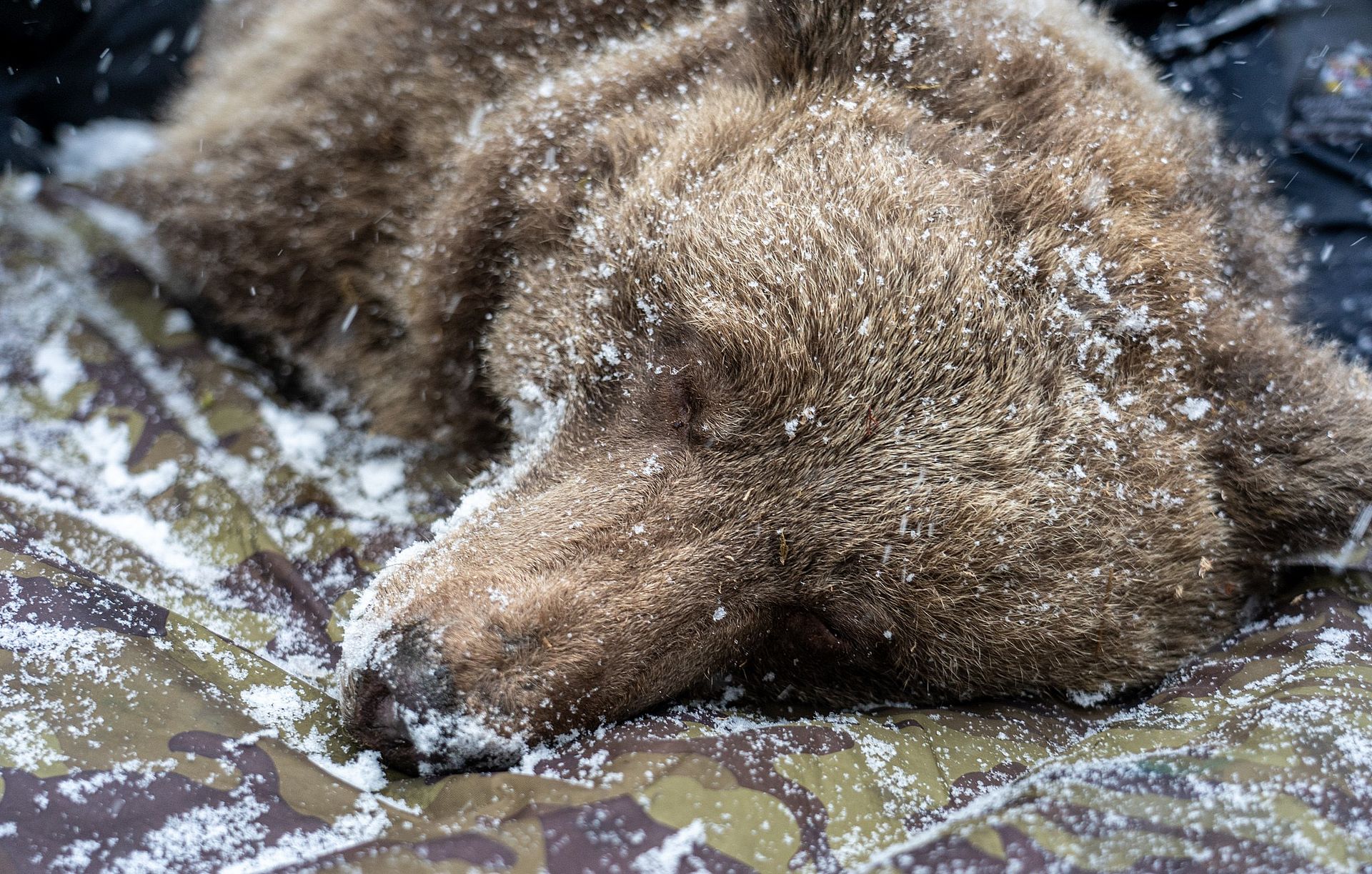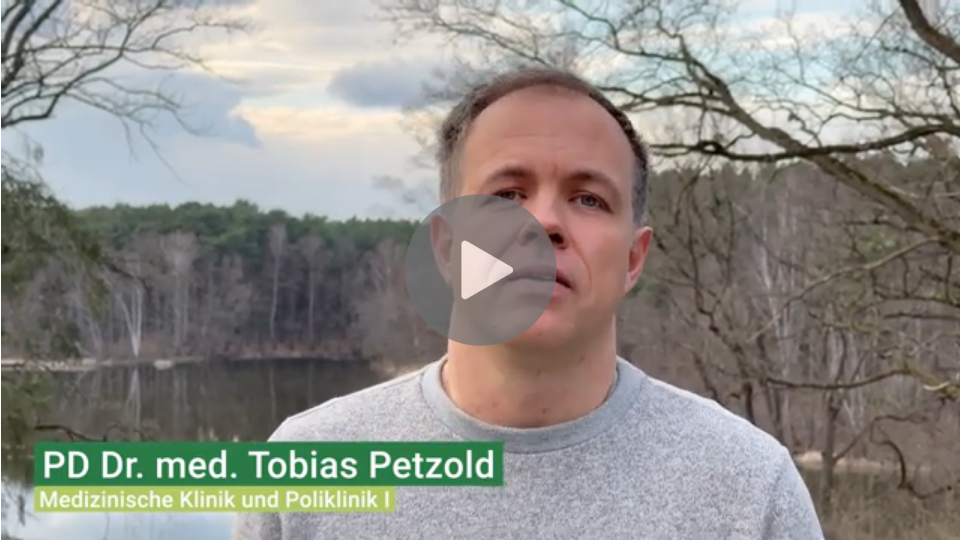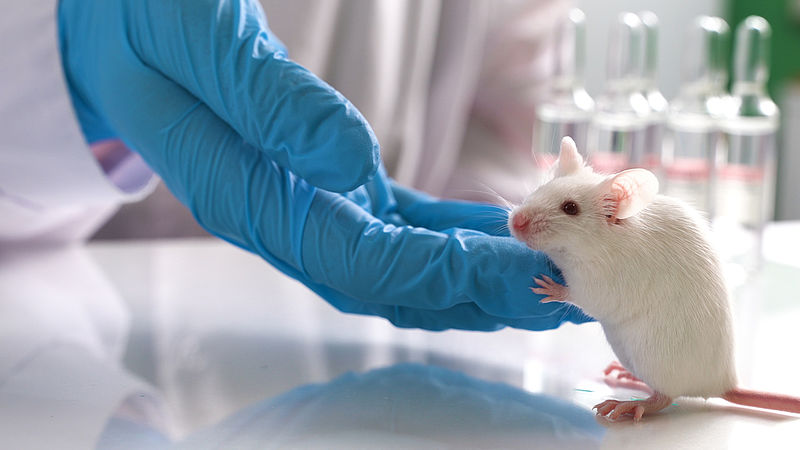When people are bedridden for weeks, the risk of a blood clot forming in a vein, travelling through the circulation and blocking a blood vessel in the lungs increases. Immobility is actually one of the greatest risk factors for such venous thromboembolism with its life-threatening consequences.
But why can brown bears sleep almost motionless for months in winter without coming anywhere near the risk of this disease? And why do paraplegic patients not have an increased risk of thrombosis after the acute phase of the injury? An international team of researchers led by Dr Tobias Petzold from the Department of Medicine I (Director: Prof. Dr Steffen Massberg) at LMU University Hospital has found answers to this paradox. The solution to the riddle: brown bears and paraplegics utilise a mechanism that reduces the interaction between blood platelets and immune cells and thus prevents the formation of blood clots.
Brown bears analysed in the mobile laboratory in Sweden
For the cardiovascular specialists at LMU Hospital led by Tobias Petzold, this research project began with two trips to central Sweden - one in summer and one in winter. A whole group of brown bears have been undergoing scientific research there for more than ten years, including by Danish cardiologist Prof Dr Ole Frobert from Örebro University Hospital in Sweden, who suggested the new collaborative project to his colleagues in Munich.
The brown bears carry GPS transmitters that mark their location and were sedated for a blood sample and immediately released back into the wild. In a mobile laboratory, cardiologist Petzold and his colleagues analysed the samples within three to four hours. The question: Does the coagulation system of brown bears differ during hibernation and during summer activity? The so-called plasmatic coagulation system normally plays a decisive role in the development of venous thrombosis. "But we did not find any dramatic relevant difference," says cardiologist and DZHK scientist Dr Manuela Thienel. She is co-first author of the study, which was also funded by the DZHK.
The researchers took some of the blood samples to Munich, where they scrutinised the blood platelets in their laboratories. This revealed that In the hibernating brown bear's body, "the interaction between the blood platelets and inflammatory cells of the immune system is slowed down", as cardiologist Petzold says, "this explains the absence of venous thrombosis." The scientists then demonstrated exactly the same mechanisms in paraplegic patients - and in healthy volunteers who literally lay in bed for three weeks as part of an experiment by the European-German and American space agencies (DLR and NASA).
Bears in hibernation downregulate heat shock protein
In order to track down the molecular mechanism behind the protective process, the physicians enlisted the expertise of Prof. Dr Matthias Mann and Dr Johannes Müller-Reif, also first author of the study, from the Max Planck Institute of Biochemistry in Martinsried. Matthias Mann is a Principal Investigator at the DZHK.
Using so-called mass spectroscopy-based proteomics, almost 2,700 active proteins were quantified in the blood platelets of the bears. Crucially, 71 proteins were upregulated and 80 downregulated during hibernation compared to summer activity. Johannes Müller-Reif: "The platelet protein with the greatest difference between hibernating and active bears was the heat shock protein 47, which was downregulated 55-fold in the hibernating bears." In particular, the researchers were able to show that the downregulation of this HSP47 occurs under long-term immobilisation in different mammalian species (humans, brown bears and pigs) and is thus an evolutionarily conserved mechanism for thrombosis prevention.
Low HSP47 protein levels reduce the interaction between platelets and inflammatory cells. In fact, according to Tobias Petzold, "HSP47 alone is able to activate the inflammatory cells." In biomedical terms, this means that if HSP47 could be blocked with a suitable molecule in immobilised acute patients, it might be possible to prevent the risk of venous thrombosis. Small molecules that switch off HSP47 are already available for laboratory experiments. However, they are not suitable for potential use in humans. "That's why," says Tobias Petzold, "we now want to look for suitable substances ourselves."
Original publication: Immobility-associated thromboprotection is conserved across mammalian species from bear to human (Manuela Thienel et al., 2023)
Scientific contact: PD Dr. med. Tobias Petzold (tobias.petzold(at)med.uni-muenchen.de), Medical Clinic und Policlinic I, LMU Munich, Campus Großhadern
Source: press release LMU




